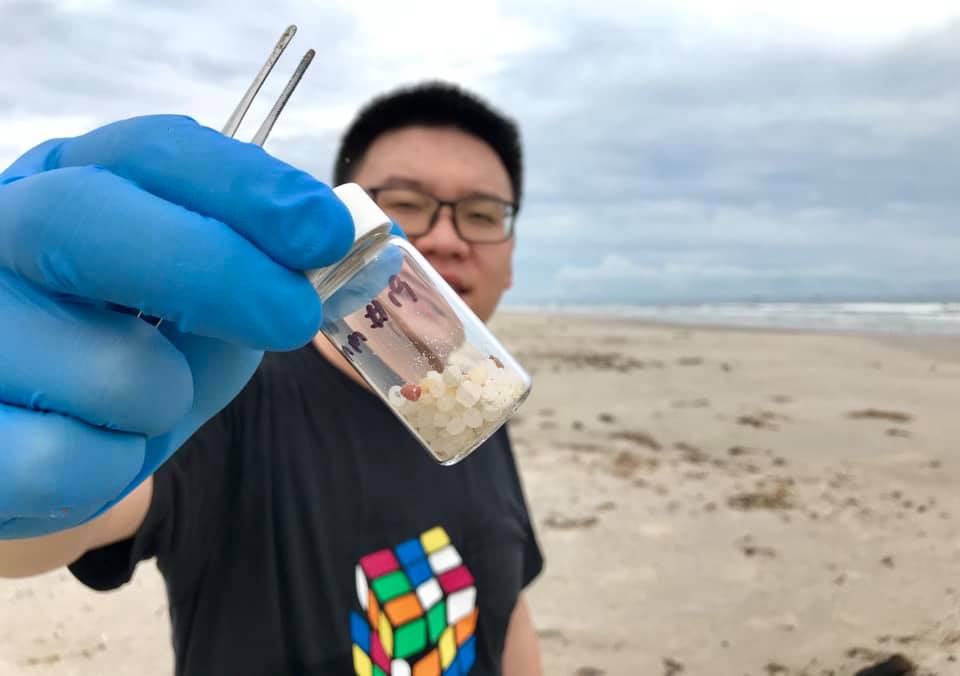Heatwaves Hit Hard: Specialist Butterflyfishes Fail to Adapt Diet

A pair of ornate butterflyfishes in Mo'orea, French Polynesia during the 2019 coral bleaching event. Ornate butterflyfishes are selective feeders that primarily feed on coral. New research from UTMSI shows that these fishes don’t shift their diets during coral bleaching events that result in high coral mortality, which can have direct consequences for their populations, especially as coral bleaching events are predicted to increase in the future. Credit: Jordan Casey.

Corals in various stages of bleaching around Mo'orea, French Polynesia, during the 2019 coral bleaching event. Researchers discovered that the fishes preferred newly bleached corals release nutritious mucus while avoiding older bleached corals or partially dead corals. Credit: Jordan Casey.
As marine heatwaves and coral bleaching become more common, fishes that primarily rely on corals as a food source, like butterflyfishes, often suffer population declines. In a recent study published in the Journal of Animal Ecology, researchers from The University of Texas Marine Science Institute (UTMSI) and colleagues are determining how coral bleaching impacts butterflyfish diets and nutrition.
In the study led by UTMSI, Drs. Robert Semmler, a post-doctoral fellow, and Jordan Casey, an Assistant Professor, used fish and coral surveys, fish behavioral observations, gut content DNA metabarcoding, and stable isotope analysis to examine population trends, diets, and nutrient assimilation in two species of butterflyfishes surrounding a coral bleaching event in Mo’orea, French Polynesia. Previous studies have relied on visual surveys to understand what butterflyfishes consume, but that can lead to prey item misidentification. Since these butterflyfishes primarily feed on external coral mucus, they could supplement their diets with small invertebrates after severe coral mortality. In addition to using DNA to reveal a detailed picture of butterflyfish diets, the scientists analyzed carbon to nitrogen in the stomach contents and feces of the fishes to study how coral bleaching impacts fish nutrient absorption.
At the beginning of a coral bleaching event, corals become stressed and release copious amounts of nutritious mucus. If a heatwave lasts for a significant amount of time, however, the coral becomes overgrown with algae and dies. In this study, researchers discovered that the fishes preferred newly bleached coral releasing nutritious mucus while avoiding older bleached coral and corals that already experienced partial mortality. During the bleaching event, the butterflyfishes did not forage on alternate prey items, and despite the severity of the bleaching and subsequent coral declines, corals continued to comprise approximately 90% of their diet. The scientists also revealed that despite the initial pulse of nutrient-rich mucus consumed by the butterflyfishes, the fishes did not adequately absorb the nitrogen from the stressed corals.
Together, these results do not bode well for the butterflyfishes. Marine heatwaves and coral bleaching events are predicted to intensify over the next decade, but these fishes have no choice but to consume corals. As coral bleaching continues and often results in coral mortality, the fish that depend on them may also perish.
Drs. Semmler and Casey are joined in the study by Gabrielle Martineau, Drs. Nina Schiettekatte and Valeriano Parravicini from Université de Perpignan in France, Morgan Pratchett from James Cook University in Australia, and Michael Berumen from Kin Abdullah University of Science and Technology in the Kingdom of Saudi Arabia. The research was funded by BNP Paribas Foundation, the University of Texas Marine Science Institute, and a Make our Planet Great Again grant.



